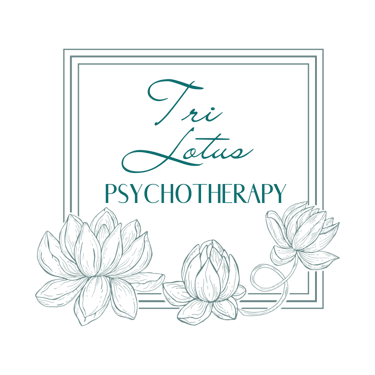NOW ACCEPTING NEW CLIENTS: In-Person in Calgary & Online across Alberta Book a Free 20min Introductory Call! CLIENT LOGIN
Bluey Isn’t Just for Kids: What Parents Can Learn About Repair & Connection
This post explores how Bluey models emotionally attuned parenting, repair, and resilience - and how these same skills can help families navigate real-life challenges. Includes practical emotion coaching strategies you can use at home.
PARENTING
Tri Lotus Psychotherapy
10/20/20253 min read


Bluey Isn’t Just for Kids: What Parents Can Learn About Repair & Connection
If you’ve ever found yourself “just finishing the episode” after your child wandered off, you’re not alone. Bluey, the animated Australian show about a curious 6-year-old Blue Heeler, has earned a devoted parent audience for good reason. Beyond the catchy games and gentle humour, Bluey quietly teaches powerful skills for emotional resilience, repair, and connection at home. If you’re looking for therapy support in Calgary that families can trust, with our Calgary therapists these same ideas show up everyday in our therapy rooms.
What is Bluey (and why do parents love it)?
At its heart, Bluey follows a young pup who goes on everyday adventures with family and friends. It’s beloved by kids and parents alike because it feels real: feelings get big, mistakes happen, and everyone learns together. The adults model calm, curious, emotionally attuned parenting, exactly the skills most of us wish we’d had modelled for us growing up.
Bluey and Mental Health: How the show builds resilience
Resilience isn’t about “staying positive” or never feeling upset. It’s the ability to notice, name, and navigate difficult emotions, and then move forward. Bluey shows this beautifully:
Emotions are acknowledged, not avoided. When something hard happens, a parent often validates first: “That was disappointing, hey? It makes sense you feel sad.”
Coping before fixing. Rather than rushing to distract or “cheer up,” the show normalizes sitting with feelings, breathing, and reconnecting.
Self-compassion and confidence grow. Characters make mistakes, repair, and try again, building trust in themselves and each other.
Why does this matter? Many of us were taught to push tough feelings away. Kids who learn to feel, name, and regulate emotions early are better prepared for life’s ups and downs. They also feel less alone in their experiences, because the adults around them are willing to feel, too.
Emotion Coaching 101 (inspired by the Gottman Method)
Emotion coaching helps a child understand and manage feelings by validating emotions, setting limits on behaviour, and problem-solving together. If you’ve ever searched “What are the five steps of emotion coaching?” here they are, the same approach you’ll see echoed in Bluey, and one we often practice in emotion coaching Calgary sessions:
Be aware of emotions
Tune in to your child’s cues, and your own.
Try: “I’m noticing a tight voice and quick breathing. I think we’re both getting frustrated.”
Connect in the moment
Treat big feelings as chances to bond, not battles to win.
Try: “This is hard. I’m right here.”
Listen fully
Get curious before you correct.
Try: “Tell me what happened from your point of view.”
Name the feeling
Putting words to feelings lowers intensity.
Try: “Sounds like disappointment and a bit of embarrassment.”
Find good solutions after validating
Collaborate on what’s fair and safe.
Try: “It’s okay to feel mad. It’s not okay to throw. Should we take three dragon breaths, then figure out how to fix the block tower?”
Pro tip: Validation doesn’t mean agreement. You can accept feelings and hold limits: “You can be angry. You can’t hit. Let’s stomp the floor or squeeze this pillow instead.”
Repair: The secret sauce of strong families
Another quiet superpower in Bluey is repair, coming back together after a conflict. Kids don’t need perfect parents; they need attuned parents who repair.
Own your part: “I snapped earlier. I’m sorry, that wasn’t fair.”
Name the impact: “It might have felt scary when I raised my voice.”
Invite reconnection: “Can we try that conversation again?”
These small repairs build safety. Over time, kids internalize: “Problems don’t end love. We can talk, fix, and reconnect.”
Practical ways to bring Bluey into your home
Use play as practice. Turn coping into a game: “Freeze like a statue, then melt with a long breath.”
Make a feelings menu. Draw faces and label emotions. Ask, “What’s your flavour today?”
Model out loud. “I’m disappointed the park is closed. I’ll take a breath and we can choose a new plan.”
Create a repair ritual. A phrase (“Want a do-over hug?”) or routine (high-five + plan) makes coming back easier.
Praise process, not perfection. “You noticed you were upset and asked for help - great problem-solving.”
Common Questions
Won’t naming feelings make them bigger?
- Usually the opposite. Naming emotions helps the brain settle. Kids feel seen - so the feeling can pass.
If I validate, am I giving in?
- No. You’re saying, “Your feeling makes sense,” not “You get whatever you want.” Validation + clear limits = security.
If you’d like to support building these skills, our Calgary therapist team can help you tailor emotion coaching to your family, your values, and your child’s temperament. We can practice scripts, plan repairs, and turn everyday moments into connection.
Ready to get started? Reach out to Tri Lotus Psychotherapy to book an appointment and learn what resilient, emotionally connected parenting can look like in your home. Whether you are seeking parenting support, emotion coaching or family therapy in Calgary, we are here to help.
Let's Connect
Please fill out the form to request an initial appointment
or complimentary introductory call
Contact
hello@trilotustherapy.com
Clinic Hours
Monday: 5:00pm to 8:00pm
Tuesday: 1:00pm to 8:00pm
Wednesday: 8:00am to 8:00pm
Thursday: 8:00am to 8:00pm
Friday: 11:30am to 4:30pm
Saturday: 9:00am to 3:00pm
Copyright © 2025 by Tri Lotus Psychotherapy - All Rights Reserved


Land Acknowledgment: I gratefully acknowledge and honour that where I live, work and play is within the traditional territories of the people of the Treaty 7 region in Southern Alberta, which includes the Blackfoot Confederacy (comprising the Siksika, Piikani, and Kainai First Nations) as well as the Tsuut’ina First Nation, and the Stoney Nakoda (including the Chiniki, Bearspaw, and Wesley First Nations); and Métis Nation of Alberta, Region 3. The traditional Blackfoot name of this place is “Mohkinstsis”, which is also known now as Calgary.

